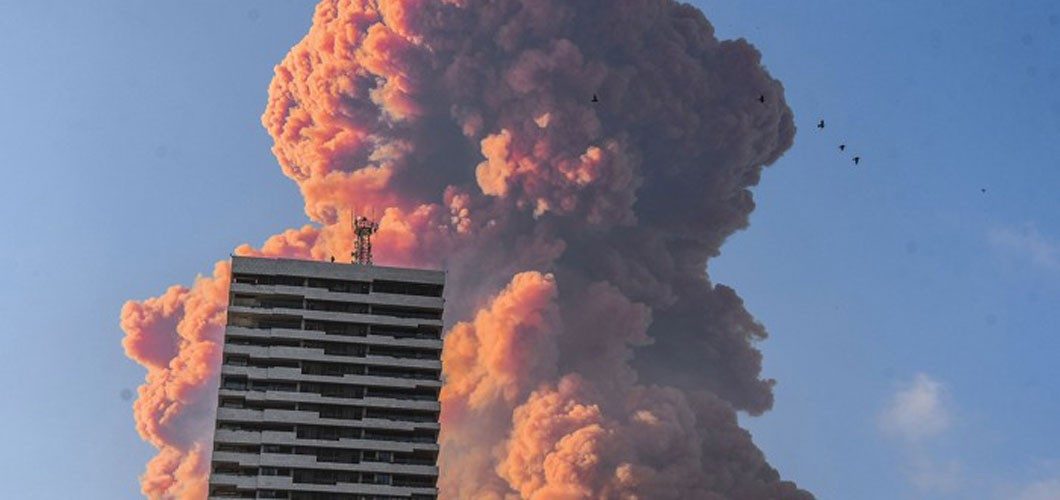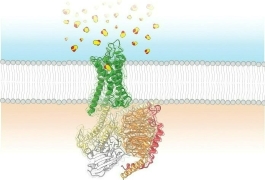The Chemistry Behind the Beirut Explosion
by Laura Howes, for C&EN

On Aug. 4, a devastating explosion struck the area around a port in Beirut. Lebanese officials are blaming the blast, which has killed over 100 people and left 300,000 homeless, on the common fertilizer compound ammonium nitrate (NH4NO3). The chemistry behind ammonium nitrate’s explosive risk is well known, leading some officials to blame the accident on negligence.
According to Lebanese officials, 2,750 metric tons of ammonium nitrate had been stored in a hangar at the city’s port. The stores had been there since September 2013 after the ship carrying the material was forced to make an unplanned stop in Beirut where it was then abandoned by its owners and crew.
Before the explosion, a fire had started in the area, creating a plume of white smoke and small explosions. When the ammonium nitrate stores exploded, a white condensation cloud spread out in a sphere from the site, followed by a huge plume of red-orange smoke rising from the hanger. Many chemists on Twitter identified that color as being a signature of NO2 gas, possibly produced from the incomplete decomposition of ammonium nitrate. Others also used the video footage to estimate the detonation velocity of the explosion as being around 3,000 m/s, which is also consistent with an explosion involving ammonium nitrate.
University College London chemist Andrea Sella was one of those who quickly identified ammonium nitrate as the likely culprit based on the plume’s color. Sella told C&EN that under normal conditions the fertilizer is inert. It will slowly decompose over time but can explode if it is set off by a fire, especially if poorly stored.
When energy is applied to ammonium nitrate, like from a fire, the molecule is no longer stable. Because ammonium nitrate contains nitrogen in two different oxidation states, an exothermic reaction occurs between the two nitrogen species: the nitrate acts as an oxidizer, while the ammonium acts as a reducing agent. If the reaction is completely clean, the only products are dinitrogen, water, and a little oxygen, but side products like NO2 are common. Because all the products are gaseous, there is a sudden, large increase in pressure that will then travel outwards at supersonic speeds, which is referred to as the detonation.
The condensation cloud caused by the blast led some people on social media to speculate that the explosion was caused by a nuclear device. But these types of clouds can also occur with a large enough conventional explosion in humid air, Sella says. What happens, he says, is that immediately behind the shock wave is an area of lower pressure that causes water to condense into microscopic droplets. The differences in pressures on either side of the shockwave can also create optical effects as light bends as it passes through the different air masses.
Sella also points out that ammonium nitrate detonations have caused previous industrial accidents, which is why most nations have strict regulations on the proper storage of the chemical. For example, the US Occupational Safety and Health Administration has multiple rules regarding ammonium nitrate, including that warehouses for bulk storage should have adequate ventilation and fire protection. It is also not common for such a large amount of ammonium nitrate to be stored so close to urban areas, according to Stella.
On Twitter, Lebanese President Michel Aoun called the failure to deal with the ammonium nitrate stores for so many years “unacceptable” and vowed the “harshest punishment” for those responsible. An investigation into the incident is ongoing.




